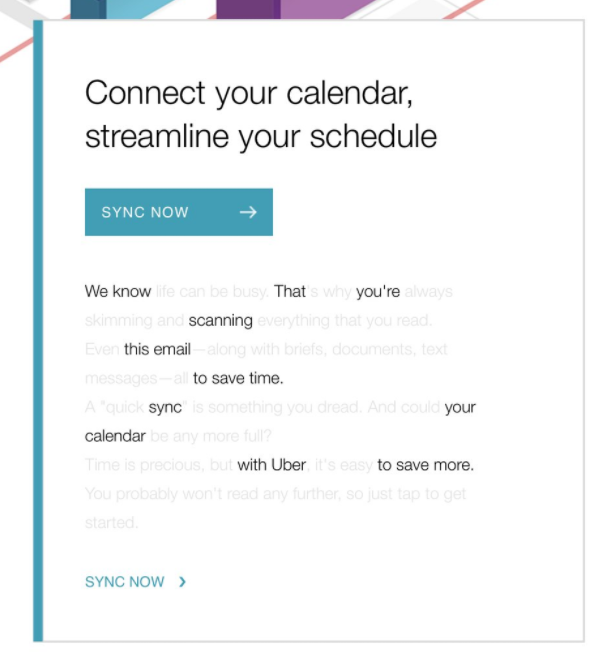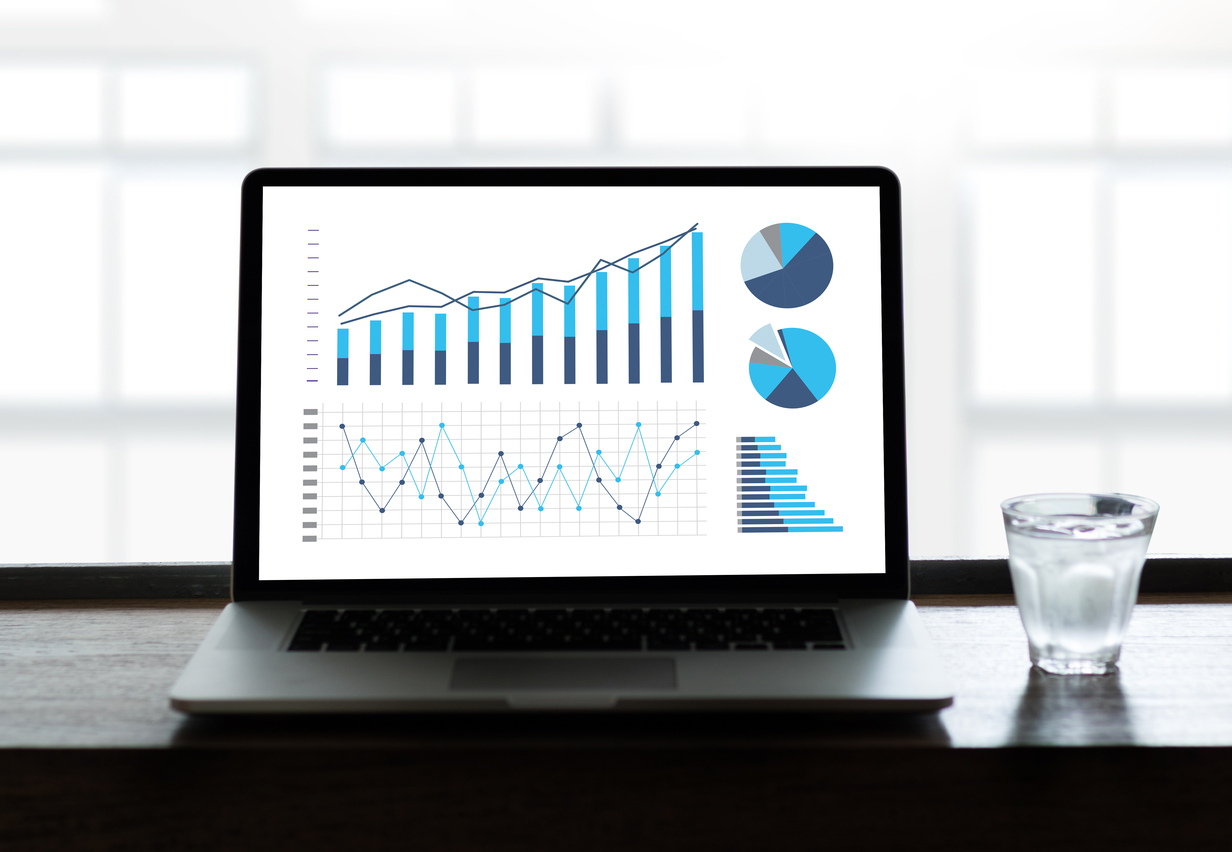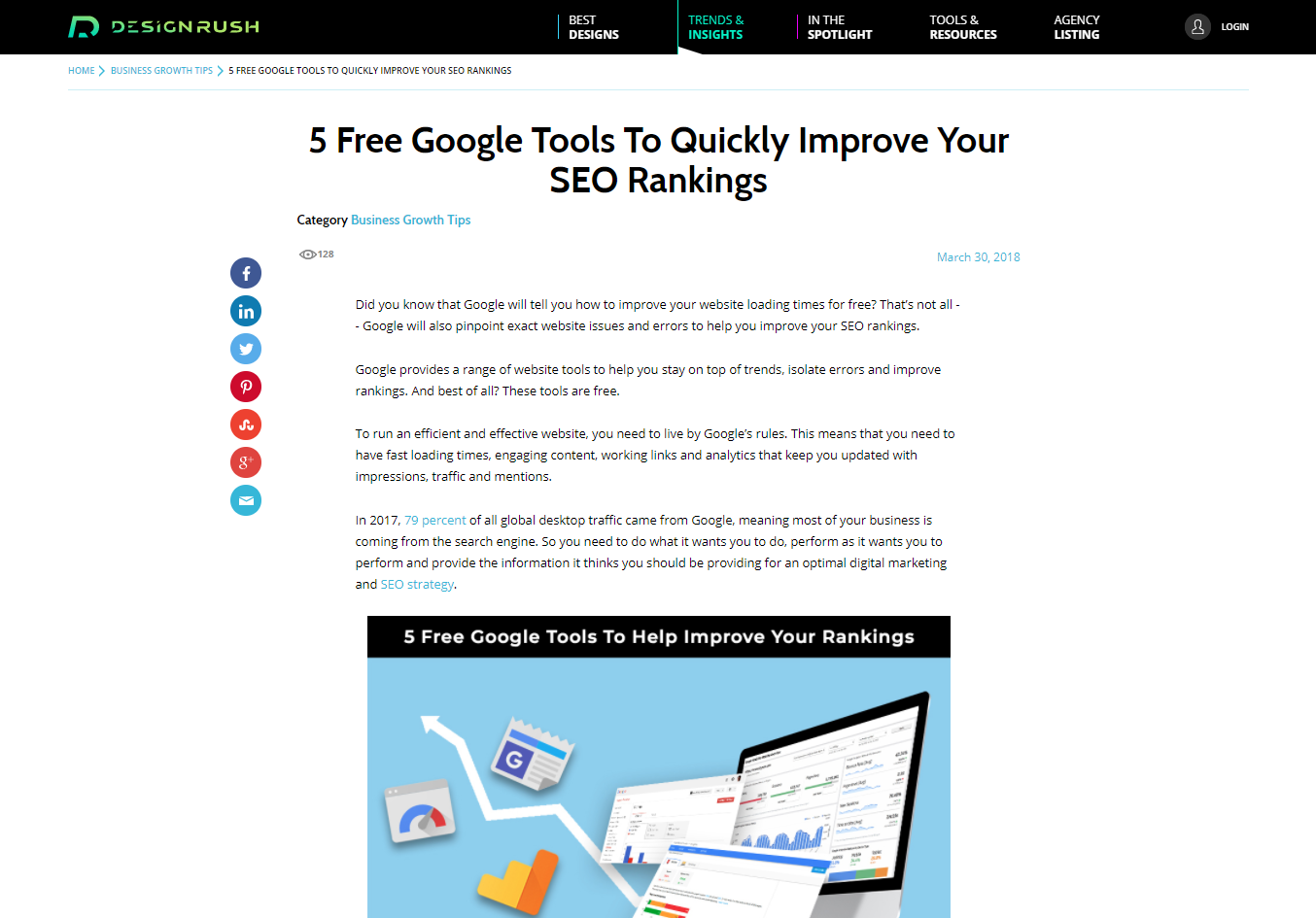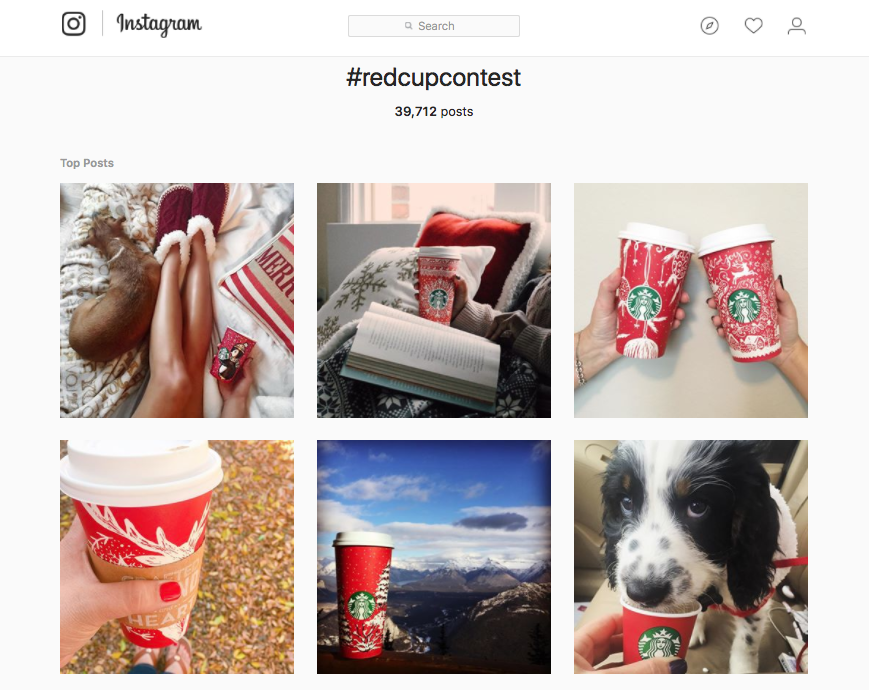Marketers will spend 15 percent more on digital marketing while simultaneously reducing their budgets for traditional marketing.
While that doesn’t mean that traditional marketing is obsolete just yet, it does mean that your marketing focus might need to shift in coming months. Consumers are spending more time online than ever, so a transition towards digital marketing makes sense. But are you ready for the digital marketing terms that will come along with it?
Whether you’re a seasoned pro or just starting out with digital marketing, it’s easy to get lost in all the CPCs, PPCs, UGC and other digital marketing terms. But with our help, you'll have a better understanding of digital marketing terms, abbreviations and definitions -- and exactly how to implement them!
Table of Contents
Digital Marketing Terms: From Click-Through Rates To Social Media Marketing And Everything In Between
Digital marketing is a large, all-encompassing umbrella that includes inbound marketing and outbound marketing initiatives. It includes a wide variety of terms, tactics, strategies and techniques. But navigating these waters doesn't have to be deadly.
Content Marketing
Possibly the largest portion of digital marketing is dedicated to content marketing, and rightfully so.
Conversion rates aresix times higherfor companies and brands using content marketing than those that aren’t.
Generating content like blogs, articles, videos, photos and infographics helps you get new leads, inform customers, increase website traffic and increase brand awareness and visibility.
Top Content Marketing & Copywriting Companies
Content marketing is also cost-effective, because it brings 3 times more leads than traditional marketing, and costs 62 percent less. Creating high-quality content can significantly impact results.
It doesn’t hurt to know that 90 percent of organizations market with content.
One of the best examples of content marketing good practices is Neil Patel’s blog, filled with effective content marketing tips and tricks.
Email Marketing
There’s no better way to stay in touch with your existing customers than through emails.
Use emails to send newsletters that let people know what’s new on a company’s website. If you have a subscription-based service, send reminders and even bonus offers for subscription renewals. You can always send discount codes for seasonal holidays and events, and even birthday greetings to your customers.
Also, email marketing brings122 percentROI (Return on Investment).
That's four times higher than any social media or direct search.
ROI measures how much you have spent on the campaign, and how much you get in return. Uber has a great example of how clever copywriting increased their conversion rate.

But in order to get to the email body, first, you have to be intrigued by the subject line and the preview text. Just look at your inbox and how many promo emails you’re ignoring.
Social Media Marketing
Did you know that 85 percent of U.S. consumers say they use social media, and almost 60 percent claimed that they follow brands? With such a huge market opportunity and a chance to be in touch with their consumers, brands readily invest in their social media presence.
Seventy-one percent of consumers who have had a good social media service experience with a brand are more likely to recommend it to others.
Social media marketing can be paid and organic (which means you post and your audience naturally finds it). But chances are that if you want to see any ROI, you will likely have to use paid social media marketing.
In the past decade, social media platforms have updated their algorithms several times and ended up decreasing the organic reach of social media posts.
Originally, 10 percent of brand followers were able to see an organic post, but today, that number is a staggering 2 percent.
Social media platforms made it clear – they want you to pay for promotion. However, when it comes to cost-effectiveness and the value of digital marketing, social media is still one of the most budget-friendly techniques.
Top Social Media Marketing Companies
Outbound marketing promotions, like a TV ad, can cost upwards of $350,000 for 30 seconds, without precise metrics and analytics that can tell you how many people have actually seen it. But considering, with the prevalence of TV streaming apps, that most of us fast-forward through the ads anyway, that money is essentially being wasted.
And for $50 spent on social media marketing, you can reach more than 10k users with ease!
As far as digital marketing terms go, social media marketing is one of the popular ones due to its elaborate targeting options. In order to prove this, one guy successfully ran a promotion that managed to target one specific user – his very own roommate.

Marketing Metrics Defined
Digital marketing strategies and campaigns -- both inbound marketing and outbound marketing -- can be measured with precision. It’s easy to know when it works and when it simply doesn’t through insightful analytics and trackable data.
Impressions, Reach And Click-Through Rate
Impressions represent the number of times your ad is displayed on a page. For example, your ad may be served one thousand times, and that’s one thousand impressions. But that doesn’t mean that all people see your ad wherever it’s posted. It also doesn't mean your ad has been seen by that many people, it's just been on that many pages -- so the same person could view your ad multiple times.
Overall though, impressions are a good metric if you want to improve brand awareness and recognition.
Don’t confuse impressions with reach, even though they seem similar, however.
Reach is the number of people who were reached by your ad. Impressions represent how many times your ad was displayed. It’s worth knowing that reach can be organic and paid.
Due to various algorithms on social media, posts with organic reach are only seen by a fraction of people who are already following a business page, while paid reach and well, paid promotion shows ads to the wider audience.
Click-Through Rate (CTR)
Click-through rates correlate to the number of people who've clicked on your ad. For example, your ad can be served thousands of times, to thousands of people, but if no one is clicking on your ad, well, that just shows there’s room for improvement.
You get a click-through rate when you divide the number of clicks with the number of impressions.
Cost-Per-Click (CPC) And Pay-Per-Click (PPC) Marketing
When we talk about digital marketing terms and cost-per-click and pay-per-click marketing, it’s important to answer the following question: Is there a difference between CPC and PPC?
While the marketing community often uses these terms interchangeably, the difference exists.
Pay-Per-Click is an advertising model. It is usually associated with banner ads, website ads and search engine ads such as Google AdWords. Even Twitter and Facebook have adopted the PPC model in the paid social media campaigns that we discussed above. Ultimately, the main goal of PPC is to generate traffic to a specific destination.
But Cost-Per-Click, as the name suggests, is the amount of money paid for every click on the ad. CPC is an important digital marketing metric because it clearly outlines how effective an ad is and how interested people are in learning more about it. And the formula for finding out costs is easy:
Cost-Per-Click = Spent Ad Budget / Clicks
Some sites offer flat-rate CPC where the click price is predetermined. Another type, the more common one when it comes to keywords and search engines, is the bid-based CPC.
Basically, different marketers are bidding for the same keyword, and automated auction systems determine who is going to win.
Word-Of-Mouth Marketing
One of the most effective forms of marketing and promotion is the word-of-mouth marketing. Every time a friend or a family member recommends you a product or a service they love, it’s considered word-of-mouth advertising.
Simply put, word-of-mouth marketing results from a happy customer who isn’t shy about sharing their extraordinary experience with others.
It’s easy to trust recommendations from friends and family because they don’t have anything to gain by lying, they're just expressing their firm belief. These people are strong brand advocates who can send dozens of new leads to your business.
One of the brands that successfully uses word-of-mouth strategy is Lush Cosmetics. They have a zero-spend policy on advertising, all their reach is organic, and whenever you visit their store, you are welcomed with easy-going and chatty staff who will readily demonstrate their products.
Even the store layouts are inviting you to touch and smell their products.
P.S. Word-Of-Mouth Marketing is the no. 1 reason (and proof!) why website testimonials, sponsored influencer posts and services like Yelp are popular and effective.
Search Engine Optimization (SEO)
It’s glaringly clear why SEO is one of the most important digital marketing terms to know – you should be on the first page, and search engine optimization is how you get there.
Search engine optimization is an umbrella phrase for all courses of action taken to better optimize your website. Search engines rank websites based on numerous (hundreds, really) SEO signals, so the site that is optimized for the majority of them will rank better. Some are on page SEO indicators and some are off page SEO indicators.
There are a number of factors that go into how Google ranks your website -- from content to site speed and a range of factors in between. There are a lot of tiny improvements you can make that'll have a huge impact.
Top SEO Companies
So, what can be optimized?
You can optimize your content, website copy and blog posts with keywords that Google is picking up and users are searching for.
Another SEO signal is the time spent on the website. That's why longer blog posts perform better on search engines.
According to Curata, long-form content brings in seven times more leads than short-form content. Long blog posts offer more data, so you save people the trouble of extensive online browsing, and you build your authority on the topic.
Did you know that companies that publish at least 16 blog posts per month get almost 3.5 times more traffic than companies that publish four monthly posts or fewer? Traffic represents the number of people who visited your website and is one of the major SEO signals, and important digital marketing terms.
Naturally, longer blog posts contain more keywords, backlinks and valuable information for your website visitors.
Since we’re mentioning backlinks, here’s what you need to know about website credibility. Search engines love sites that are reputable. So, how do they determine which ones are? One of the signs is that people link back to the website. If you take a look at our Trends articles, you’ll see that we make sure we link to credible sources throughout an article, like the one you see below, to support research. Each one of these links is a backlink. Whenever someone mentions you online and links back to your website, your reputation increases.

Some technical aspects affect your search rankings too. Website load speed, for example. Fast-loading websites rank better on search engines AND people.
(You can test your website load speed here).
Poor design and bad user experience also influence bounce rate -- the rate of people who leave your website. A high bounce rate indicates to search engines that people aren’t interested in your content.
So, it's easy to determine that website design directly affects your SEO rankings. But a strong website design does more than get you onto page one of Google -- it's worthwhile noting that design can help you sell more and increase overall online purchases.
Headers, Headlines, Or H Tags
Search Engines don’t “see” websites like we do. We have to help them with HTML code to let them know what the paragraphs, links, and headers are that will grab attention. Headers are important because they give structure to the website page. That’s why you should also use keywords in your headers.
<h1>This is an H1 Headline</h1>
<p>This isn’t.</p>
H1, H2 and H3 tags are all important for high-ranking content -- take special care to craft keyword-specific H1s and H2s for every page to help Google understand the content on your website.
If you use WordPress to manage your website content, try downloading the Yoast plugin. It has a checklist for every webpage that will help you with on-site SEO optimization.
What Is Closed-Loop Marketing?
Closed-Loop Marketing, or “closing the loop” means gathering data on your website, usually with the help of your Customer Relationship Management (CRM) software, and acting on it. Another definition could be that closed-loop marketing is aligning the data from both the marketing and sales departments.
What do cookies have to do with it?
By enabling cookies, you are actually helping websites recognize you the next time you visit them. Also, you let them know how you got there, and that is a worthy metric, especially for closed-loop marketing.
The loop looks like this:
- The visitor lands on your website, and cookies let you know whether its organic visit, or referred by email, social media or something else entirely.
- While the visitor browses your website, cookies track what the visitor is doing on the website and collects data.
- At this point, visitors convert to leads, and the software recognizes this through submitted lead-capturing forms.
- This is where your leads become customers. At this final stage of the loop, you go back to the beginning and mark the customer’s source as valid.
What can you do when you close these loops? It’s simple –- not all leads are created equal. For example, this type of data can show marketers that email leads don’t convert well into customers, whereas social media leads prove to be high-yielding spenders.
Marketers can then allocate a portion of email marketing to social or can take the necessary steps to improve their existing email marketing techniques.
User-Generated Content (UGC)
User-Generated Content, or UGC for short, is a powerful strategy that brands use, and is one of the less exploited digital marketing terms today. We've already delved into the benefits of content marketing, but that means that you have to invest time, money and human resources to create that content. Now, imagine having an army of fans who create content for your brand, for free! That’s user-generated content in action.
A perfect example of UGC is Starbuck’s campaign on Instagram. With a hashtag #RedCupContest, Starbucks enticed people to first, buy their product than to create pictures with their cups and share them online. The last #RedCupContest had more than 40,000 posts! Starbuck’s contest costs just the prize they are giving away – in coffee.

Since it’s likely you aren’t as big of a brand as Starbucks, how can you use UGC in your campaigns? Well, it’s simple. If we are talking about Instagram, you can always repost someone else’s content about your brand and feature them on your profile. For Facebook, use contests and giveaways. Just make sure to entice people with a reward, add an appropriate hashtag and watch the mentions and posts roll in.
UGC is worth it in the long run, too -- 76 percent of people in a survey said that they trust more the content shared by average people.
That's why influencer marketing is an increasingly popular marketing trend.
B2B And B2C Marketing
When businesses market their products or services to other businesses, that’s called Business to Business Marketing, or B2B in short. When businesses offer products and services to consumers, that’s Business to Client Marketing.
Let’s take software companies, for example. They have both B2B and B2C marketing models, and the techniques are basically the same, which is why these digital marketing terms are easily confused. Think of it this way: there’s much more profit in selling hundreds of software packages to one larger business. While a single consumer makes the decision based on emotions, product popularity, recommendations, B2B buyers take into consideration price and profit.
That’s why ROI and progress reports are very important metrics to B2B marketers.
Sixty percent of digital marketers measure their success in marketing with website traffic progress, and 45 percent measure it based on the number of social media shares.
If your job is to market a product or a service to consumers, outline benefits of the product. If you're marketing to businesses, make sure to show them the facts about how that product can help their productivity, or save their time and money.
Caterpillar has proven that it understands all about B2B marketing – they marketed their products’ precision and durability by shooting a video where massive construction machines play Jenga with 600-pound wooden blocks.
Volvo is the winner in B2B marketing, though. Their live test included one of the most durable trucks they build, the Volvo FMX, a 4-year-old girl Sophie and a remote control.
A perfect example of marketing to businesses while creating a viral video that has been seen by nearly 14.5 million people.
If you’re looking for a great B2C marketing example, look no further than Purina – they created a series of puppy food commercials together with Buzzfeed. Apart from the cuteness overload, long videos about puppy-human bonding experience are easily relatable and consumers appreciate this. All videos are posted on a microsite Puppyhood as a great lead generation tool. Watch their adventure videos that have amassed more than 30 million views on YouTube.
Buyer’s Journey And Buyer’s Decision Process
Every buyer goes on a journey when making a decision to buy something. Knowing how the process looks like lets marketers influence it. If you think about it, whether you are buying a new phone, a house or a chocolate bar, the process remains the same. The length of the buyer’s journey, however, can’t be predicted.
This is how digital marketing terms explain the stages of the buyer’s journey:
1. Identifying The Problem
Once the customer realizes there is a problem, a need that now needs to be met, the buyer’s journey can begin. But, in this awareness stage, a skillful marketer can even reach people who haven’t yet discovered they have a problem.
2. Searching For Information
When beginning their research, 72 percent of people turn to Google to try to find a solution - in this case, a product or a service that can help them solve a problem. That’s why it's often said that Google directly influences the outcome of buyer’s decision process. Other sources of information gathering can be vendors, family members and friends.
3. Evaluating The Alternatives And Comparison Stage
In this phase, buyers themselves learn about the criteria that will help them make the purchase. Comparing products or services to one another will reveal the best one that will satisfy the need, and solve the problem identified in the first stage. You can help buyers make the right choice by investing in brochures, whitepapers and landing pages with clearly defined product features.
4. Decision-Making Stage
The final stage of the buyer’s journey is the purchase.
Did you know that67 percentof buyer’s decision is already formed online before the sales stage?
That doesn’t mean that there’s no way to influence that decision during other stages, however.
How To Influence Buyer Decisions?
Well, if the search for information starts online, make sure that your SEO game is strong so that buyers take you into consideration.
Then, find out exactly what ails them, and offer content that will respond to their problems with clear facts and solutions. Monitor your online reputation closely, and ask yourself: are there enough reviews and testimonials, and is there something you can do to change them for the better? Use paid social media marketing to target buyers before they reach the decision, and even outwit the competition by offering them a discount.

Digital Marketing Terms, Decoded
Combining several digital marketing techniques into one streamlined strategy can grow your business quickly and easily. For example, when social media is part of a buyer’s journey, customers convert at a 129 percent higher rate and are four times as likely to spend significantly more than those without a social component.
But do you need to hire a digital marketing agency to execute these strategies for you?
In order to reach that answer, ask yourself whether you have the time and knowledge to fully manage the tasks in-house, or the budget to bring on an external expert.
Is Digital Marketing For You?
Digital marketing types and terms can be overwhelming when you first start learning them (and the number of abbreviations certainly doesn’t help). It is an ever-changing field that can provide you with many pleasant challenges – it’s everything but boring, and requires a certain playful mindset.
Whether you're thinking of becoming a digital marketer or just want to execute stronger marketing campaigns for your company, understanding all the terms and strategies associated with digital marketing will set you on the right path.



-preview.jpg)





